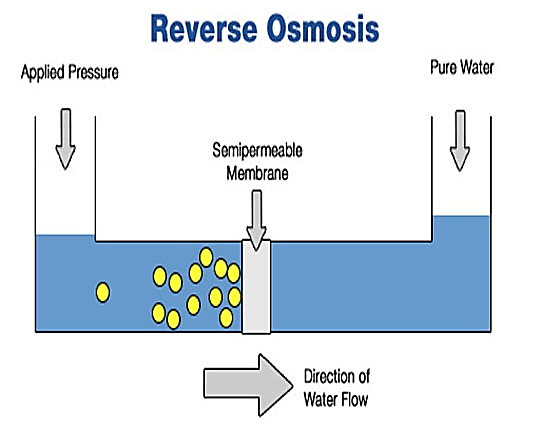
Seawater Desalination with Reverse Osmosis Plant
All Reverse Osmosis crops are fundamentally Desalination Crops but desalination is becoming referred to sea drinking water Ordinarily.As sea water has really superior TDS demands quite significant pressure to force sea water by way of membranes which are distinct then brackish drinking water membranes.
Reverse Osmosis Plant Information:
A reverse osmosis plant is usually a producing plant, where water is purified and desalinated by forcing h2o via a membrane, typically referred to as a reverse osmosis method. Water produced by plant RO might be used for a number of functions like desalination, wastewater therapy, as well as the reclamation of dissolved minerals.
RO Plant Description
An average drinking h2o RO plant process involves six KW hours of electricity to desalinate one cubic meter of h2o. Reverse osmosis drinking water plants necessitates several different pre-cure tactics like softening, DE chlorination, and anti-scale remedy. Following pre-procedure, substantial levels of tension ship water by way of a semi-permeable membrane, which holds all contaminants other than water.
RO Plant Structure
To boost the performance and life of the Reverse Osmosis plant, helpful pretreatment on the feed water is needed. Selection of the appropriate pretreatment will increase effectiveness and membrane lifestyle by cutting down:
Fouling
Scaling
Membrane Degradation
RO plant design and style is consisting of:
Pinpointing pretreatment necessity of Reverse Osmosis Plant
If your feed water has traces of weighty metals, it is very suggested to dose some chlorine to change the dissolved major metals to physical kind, the media filter will filter a lot of it within a ro drinking water purifier plant.
Reverse Osmosis Plant Array of membrane
Membrane components are a vital Element of RO plants. The proteins (mainly polyamide) that makeup membrane aspects range according to the ending clarity and consumption drinking water seawater or brackish drinking water and many others
Waterman engineers Australia RO plant for seawater desalination
Waterman Engineers in Australia has built a Reverse Osmosis (RO) plant for seawater desalination, which offers numerous rewards in excess of other desalination procedures. Below are a few vital great things about their RO plant:
Electrical power Performance:
Compared to other desalination techniques like thermal distillation, RO requires much less Power. Waterman Engineers' RO plant makes use of Highly developed membrane technologies, allowing it to work at decreased pressures and lessen Total Vitality consumption.
Environmental Effects:
RO generates a lot less brine discharge when compared to thermal approaches, decreasing the influence on marine ecosystems. This aligns with Australia's focus on environmental sustainability and conservation.
Superior Drinking water Purity:
The RO process proficiently removes salts, minerals, and impurities, developing substantial-high quality freshwater that fulfills stringent drinking drinking water standards. This dependability is crucial for delivering safe and cleanse h2o to communities.
Modular Design and style:
Waterman Engineers' RO plant employs a modular design, enabling for scalability and adaptability. This is particularly advantageous for parts with different water needs, as modules is often added or adjusted accordingly.
Minimized Footprint:
RO crops usually Have a very lesser Actual physical Desalination Plant Manufacturer footprint in comparison to thermal desalination vegetation, which regularly have to have extensive infrastructure for heating and cooling processes.
Fast Commence-Up and Shutdown:
RO vegetation is often begun and stopped relatively rapidly, enabling for greater responsiveness to shifting drinking water calls for and emergencies.
Decrease Chemical Utilization:
Not like Various other desalination approaches, RO calls for less chemical substances for operation and cleansing, reducing chemical-relevant environmental worries.
Consistency in Overall performance:
The RO procedure is much less delicate to feedwater excellent fluctuations than other approaches, making certain a more dependable effectiveness after a while.
Expense-Usefulness:
Though First investment decision costs is usually important, RO plants are inclined to possess lessen operational and upkeep costs In the long term in comparison with thermal methods.
Reverse Osmosis (RO) can be a h2o purification method that uses a partially permeable membrane to eliminate ions, unwanted molecules, and larger particles from consuming h2o. By applying strain to beat osmotic pressure, it makes it possible for the passage of h2o molecules whilst rejecting contaminants, therefore developing clean drinking water on just one facet from the membrane and concentrated impurities on another.
The Performing basic principle of a Reverse Osmosis (RO) plant entails making use of strain to your saline solution to force water molecules through a semi-permeable membrane. This membrane permits only drinking water to move when rejecting salts, contaminants, and impurities, causing purified h2o over the permeate facet in addition to a concentrated solution of contaminants around the brine side.
The advantages of Reverse Osmosis consist of generating large-good quality, clear drinking water by getting rid of contaminants, getting effective and cost-effective over time, demanding small chemical use, and currently being adaptable to varied scales of operation from compact household programs to massive municipal plants.
RO crops have replaced Demineralisation (DM) crops mainly because they generally supply a much more economical and value-efficient Alternative for drinking water purification. RO methods You should not call for the regeneration chemical substances that resin-centered DM vegetation do and will get rid of a broader range of contaminants, which include dissolved solids and microorganisms.
Waterman Engineers Australia probably uses Reverse Osmosis (RO) vegetation for seawater desalination by forcing seawater via a semi-permeable membrane to remove salt and various impurities. This process makes fresh, potable drinking water within the ocean, addressing water scarcity and giving a sustainable supply for different requires.